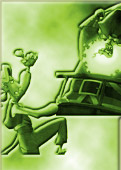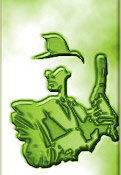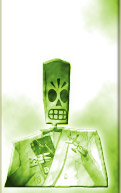| Microsoft Adventure | Gordon Letwin / Microsoft | 1981 | |
|---|---|---|---|
  |
On 12 August 1981, IBM announced the IBM PC
complete with a brand new operating system from Microsoft and a 16-bit
computer operating system called MS-DOS 1.0. Less than four months after
IBM introduced the PC, Time Magazine named the computer "man of the
year". Though other personal computer platforms were better suited to
running games with better graphics, eventually the monopolization of
Microsoft's operating system with Windows 1.0 released on November 20,
1985 at least brought a standardization to the release of software for
personal computers. Microsoft Adventure was the only game included with
the initial set of programs announced and published for the IBM PC,
making it the first commercial game on this platform. In the early 1970s programmer, caver, and role-player William Crowther developed a program called Colossal Cave Adventure. An employee at Bolt, Beranek and Newman (BBN), a Boston company involved with ARPANET routers, Crowther used BBN's PDP-10 to create the game. The game used a text interface to create an interactive adventure through a spectacular underground cave system. Crowther's work was later modified and expanded by programmer Don Woods, and the game became wildly popular among early computer enthusiasts, spreading across the nascent ARPANET throughout the 1970s. The unique combination of Crowther's realistic cave descriptions and Woods' addition of fantastical elements proved immensely appealing, and defined the adventure game genre for decades to come. Swords, magic words, puzzles involving objects, and vast underground realms would all become staples of the text adventure genre. The "armchair adventure" soon spread beyond college campuses as the microcomputing movement gained steam. Numerous home brew knockoffs and variations on Colossal Cave Adventure (which eventually came to be known as simply Adventure) appeared throughout the late 1970s and early 1980s. This port was written by Gordon Letwin in 1979. |
||
|
|
|
||
|
|
|
||
|
1 2 3 |
|
||
|
|
|
||
|
|
|
||
|
|
|
||
|
|
|
||
|
|
|
||
|
|
|
||







